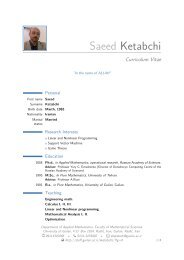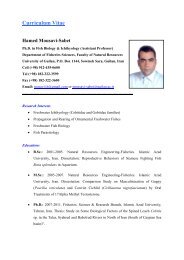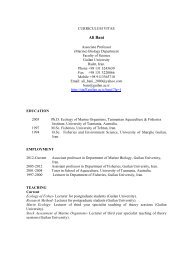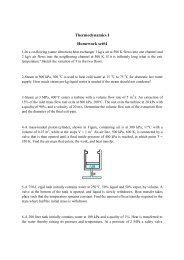Medical Tourism in Developing Countries
Medical Tourism in Developing Countries
Medical Tourism in Developing Countries
- No tags were found...
Create successful ePaper yourself
Turn your PDF publications into a flip-book with our unique Google optimized e-Paper software.
184 ● <strong>Medical</strong> <strong>Tourism</strong> <strong>in</strong> Develop<strong>in</strong>g <strong>Countries</strong><strong>in</strong>centives. Moreover, if a country has both the capacity and the <strong>in</strong>centive,then the crowd<strong>in</strong>g-<strong>in</strong> effect is likely to outweigh the crowd<strong>in</strong>g-out effect.How does one know if crowd<strong>in</strong>g out or crowd<strong>in</strong>g <strong>in</strong> has occurred?Indeed, how do we know if revenues earned by corporations revert back tof<strong>in</strong>ance the public sector or if the corporations have honored the terms onwhich they were granted subsidies? There are no boundaries, no clear-cutdemarcations that need be crossed to <strong>in</strong>dicate one way or another. To theextent that <strong>in</strong>dicators of crowd<strong>in</strong>g out and crowd<strong>in</strong>g <strong>in</strong> are identified, methodsfor measurement are set, and data are available, then countries couldmake an assessment of the effect of medical tourism on public health.If crowd<strong>in</strong>g out is found to exist, then public policy must mitigate the negativeimpact of medical tourism on the poor local populations. In that effort,it must ensure that there are laws <strong>in</strong> place to protect patients’ rights, as wellas penalties <strong>in</strong> place to punish those who refuse to treat patients who cannotpay. If crowd<strong>in</strong>g <strong>in</strong> is found to exist, that warrants appropriate encouragementand expansion. Either way, the relationship between medical tourismand public health is complex and precarious and requires f<strong>in</strong>e balanc<strong>in</strong>g.Economic Development: Are We There Yet?Less developed countries are like passengers on a journey, impatient to getto their dest<strong>in</strong>ation. That dest<strong>in</strong>ation is a higher level of economic development,a level not del<strong>in</strong>eated by specific boundaries or thresholds, yet it isone that is recognizable when reached. <strong>Medical</strong> tourism is viewed as a wayto speed up the journey, to bypass useless stops and frustrat<strong>in</strong>g dead-ends.For some countries, it is a feasible growth strategy. Those countries standout among LDCs. If asked the question “Are we there yet?” the answer forthem is yes, they have arrived. They have surpassed other countries withrespect to numerous economic <strong>in</strong>dicators, they have developed political andlegal <strong>in</strong>stitutions, they have a vibrant tertiary education <strong>in</strong> sciences,et cetera. Because of their advantages (described <strong>in</strong> chapter 5), ten dest<strong>in</strong>ationcountries can develop medical tourism and transform it <strong>in</strong>to an eng<strong>in</strong>eof growth. These same advantages enable the countries to overcome domesticand <strong>in</strong>ternational obstacles to the development of medical tourism(described <strong>in</strong> chapter 6). For many of the same advantages, these countriesare also likely to have exist<strong>in</strong>g mechanisms through which redistributivefiscal policy can be effective <strong>in</strong> alleviat<strong>in</strong>g public health-care problems sothat medical tourism may become the great equalizer, br<strong>in</strong>g<strong>in</strong>g affordablehealth care to all those who seek it. Undoubtedly, medical tourism providesthe capacity for the public sector to grow and, if alleviat<strong>in</strong>g poor publichealth is a priority, for its revenue to be appropriately channeled.
















